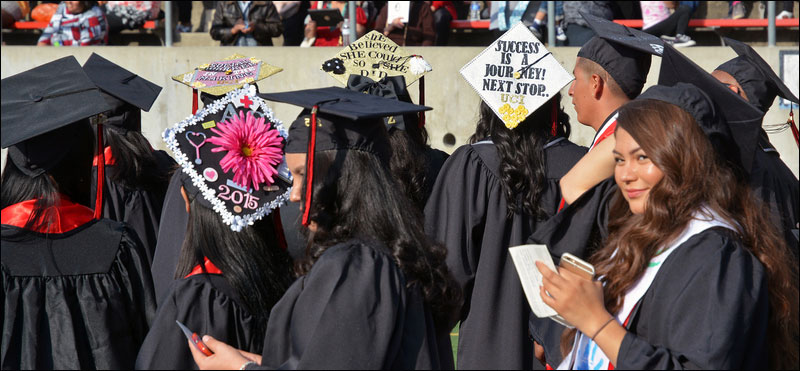Project History
 eTranscript California (formerly CCCTran) launched in Summer 2007 with transactions between California community colleges, and from California community colleges to California State University campuses.
eTranscript California (formerly CCCTran) launched in Summer 2007 with transactions between California community colleges, and from California community colleges to California State University campuses.
The table below provides a timeline of the eTranscript California project development.
| YEAR | PROGRESS |
|---|---|
|
1999-2000
|
Request for Applications (RFA) for Electronic Records Exchange awarded jointly to Yuba and Contra Costa
|
|
2000-2001
|
Request for Applications (RFA) for Electronic Records Exchange awarded jointly to Yuba and Contra Costa
|
|
2000-2001
|
Feasibility Study conducted with positive result and recommendation for transcripts
|
|
2002-2003
|
Data dictionary developed and open-source report made
|
|
2003-2004
|
Two representative models tested and RFI conducted
|
|
2004-2005
|
Requirements finalized and RFP conducted
|
|
2005-2007
|
System design and testing
|
|
2007
|
Release July 2007
|
|
2009
|
Awarded PESC’s 10th Annual Best Practices Competition Award
|
|
2011
|
Electronic Transcript Standard for California developed by Chancellor’s Office and eTranscriptCA project team. This standard supports the University of California IGETC, California State University General Education, and the Associated Degree for Transfer data fields and formats. Also supported within the Standard is delivery of community college district-wide transcripts to trading partners
|
|
2014
|
Project recognized as a key initiative to support the work of the Student Success Act of 2014, SB1456, and funding becoming available in the FY2014-15 Budget
|
|
March 2014
|
Enhancements for Electronic Transcripts Exchange via SPEEDE Server (summary: Primary purpose of the enhancements is to provide the eTranscriptCA colleges with the ability to exchange transcripts from eTranscriptCA Control Center with any technically capable registrants on the SPEEDE Server (Standardization of Postsecondary Education Data Exchange) located at http://speedeserver.org/)
|
|
2020
|
eTranscript California selected as a core component of the governor's Cradle-to-Career initiative.
|
|
2021
|
The California Virtual Campus/Online Education Initiative (CVC/OEI) began leveraging eTranscript California to deliver transcripts from the “Teaching College” back to the student's “Home College.”
|
|
2022
|
eTranscript California supports the CVC-OEI initiative by delivering transcripts from the “teaching college” to the students “home college”.
|
Background: Launch of eTranscript California
While a number of California community colleges began to use EDI technology as early as the 1990’s for electronic transcript exchange, adoption was limited primarily due to costs and complexities of supporting EDI services. In 1999, the California Community Colleges (CCC) Chancellor's Office awarded a grant to Contra Costa College and Yuba College to study the feasibility of developing new systemwide solutions for Electronic Records Exchange, including an application for admission and transcript, using new Internet-based technologies. This resulted in the report, "Electronic Data Interchange Feasibility Study" (FSR), published in Spring 2000, that described the benefit, costs, and general requirements of such systems.
Readers who would like a more detailed description of the reasons for the study, its methodology, the alternatives that were considered, and the anticipated benefits of eTranscript California (initially known as CCCTran) should refer to that document.(see "References"). The grant also financed the development of draft data specifications and functional requirements for both services.
In 2000-01 the CCC focused on the common application for admission and developed and released an ASP solution, CCCApply. In 2001-02 the transcript project was re-engaged and a common definition for CCC transcript data was developed with participation from all education segments (CCC, CSU, UC, AICCU, HS). At the time there was no mature product or service provider for XML-based transcript record exchange. The CCCSO contracted with a firm to research and report on the applicability of open-source Web Services technologies to a transcript exchange solution, and obtained a prototype. In 2002-03 ASP solutions began to emerge on the market, and the Post-secondary Education Standards Council (PESC) developed an initial XML standard for core data for transcripts toward replacing EDI standards. The eTranscript California project then initiated a pilot test project to evaluate the CCC data definition and both the open source solution model and an ASP model.
During 2003-04 five CCCs and two CSUs piloted prototypes of two electronic transcript models. Information from the pilots was used to refine a requirements document that was released as an RFI. Responses from seven vendors provided input for further refinement of the requirements and the development of budget and timelines for the next phases.
In 2004-2005 the a project committee was established consisting of one Admissions & Records representative and one Information Technology representative from eight colleges. This committee reviewed and finalized the project requirements and used a Request for Proposal process to recommend a vendor. Xap Corporation was selected to provide the transcript exchange services. During March through May, 2005, the project committee assisted Xap in developing a design document reflecting the functional requirements of the RFP. Development commenced in June, 2005.
